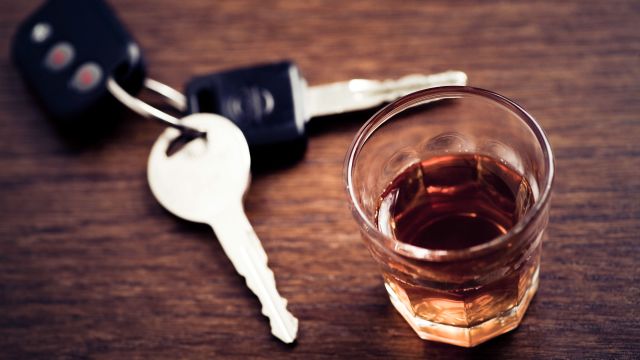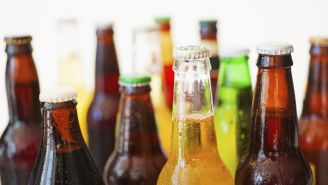Drunk driving is a crime. Getting behind the wheel while intoxicated not only puts your life in danger, it puts the lives of innocent victims at risk. Oahu has had some exceptionally tragic drunk driving incidents in 2019, including a 27-year-old inebriated male driver killing three pedestrians and seriously injuring five others after speeding through a Kakaako intersection.
The good news is that the rate of alcohol-impaired driving deaths in Hawaii has declined since 2008. The bad news is that the state still has an above-average rate of these deaths compared to the rest of the U.S. Driving under the influence of alcohol is a major health crisis in the state, one that legislators are trying to solve.
What it means to drive drunk
In most of the country, drivers age 21 and older are considered legally intoxicated or impaired when they have a blood alcohol concentration of .08 percent or higher. Individuals under 21 are prohibited from driving after consuming any alcohol.
The amount of alcohol it takes to reach a BAC of .08 varies on a number of factors such as weight, gender, age, current medications, body type, rate of consumption, metabolism, and the concentration of alcohol in each beverage you consume.
A drink size is considered 12 ounces of beer, 5 ounces of wine, or 1.5 ounces of 80 proof liquor. But we’re often served more than we think. A single shot of liquor is equal to 1.5 ounces, and a mixed cocktail with more than one shot adds up to two or more drinks. Additionally, the amount of alcohol by volume varies between different types of beer, wine, and liquor, making it difficult to gauge exactly how much alcohol you have consumed.
Alcohol impairs judgment and coordination—your reaction time slows down and you become less aware of your surroundings. The higher your BAC, the worse it gets. Impairment, however, occurs even when a person’s BAC is below the legal limit, which is why it’s advised not to drink any amount of alcohol and drive.
One in three fatal traffic accidents in the U.S. involve a drunk driver, but in Hawaii, those statistics are higher. Around 40 percent of all fatal traffic accidents are due to drunk drivers. And while the number of persons killed by a driver with a BAC of .08 percent or higher is decreasing across the nation, it has remained steady since the 1990s in Hawaii.
Hawaii’s laws have “no teeth”
In Hawaii, the legal limit is tested via a blood alcohol test or a breath alcohol measuring instrument. Punishments for drunk driving in Hawaii are less severe than in other states. Upon the first offense, drivers receive up to five days of imprisonment, a one-year driver’s license suspension, and the possible installation of an ignition interlock device, as well as other potential penalties, such as attending a substance abuse rehabilitation program and paying fines.
Drivers who rack up three drunk driving arrests are still only charged with petty misdemeanors. It isn’t until the fourth offense within a 10-year period that drunk driving becomes a class C felony, with violators facing more than one year imprisonment.
By comparison, Arizona has a lower percentage of impaired driving incidences and stricter punishments for first-time offenders, including higher fines and up to six months of imprisonment. And if you commit three offenses within seven years in Arizona, you face a class 4 felony charge, with a minimum of four months in jail.
“The laws have no teeth here,” says William Stevens, The State of Hawaii, Department of Health’s DUI Coordinator.
Ignition interlocks installed in offenders’ cars for a certain period of time after they’ve been convicted of drunk driving do reduce repeat offenses by about 50 to 90 percent in Hawaii, though. The devices won’t let drivers start their vehicles if their BAC breath test measures .02 percent or higher. After interlock devices are removed, however, drunk driving rates return to normal. Moreover, the devices are removed at the end of the specified period no matter what, even if the offender fails a BAC test the day before.
“Most offenders learn from their first offense but there is a hardcore group of alcoholics who will continue to re-offend,” says Justin F. Kollar, Kauai County Prosecuting Attorney. “Also, when a drunk driver gets their first arrest, it is safe to say that is not the first time they drove drunk, it is just the first time they got caught.”
Hawaii’s drunk driving attitudes need an update
Lax repercussions may not be the only reason Hawaii has a higher rate of drinking and driving in the country.
“I think our local culture has, to an extent, de-stigmatized the idea of drinking and driving,” says Kollar. “It seems to be widely tolerated. People convince themselves it is something they can do and get away with.”
Advocates for stricter laws in Hawaii, especially for repeat offenders, have become more outspoken following the incident in Kakaako. The catastrophe sparked a call to pass tougher legislation, such as banning convicted drunk drivers from buying or consuming alcohol in public for three years and tightening the state’s interlock ignition program.
“We are always looking at ways to improve our laws,” says Kollar. “Hawaii has notoriously weak laws when it comes to drunk driving. We work to change that at the legislature each year, with varying levels of success.”
Deterrents are the best form of prevention according to the National Highway Traffic Safety Administration. “People often won’t drive if they know someone who was recently charged, injured in an accident, or they’ve seen the sobriety checkpoints,” says Stevens.
Alternatives to driving drunk
The good news is that alternative transportation options abound in Honolulu—taxis are always available, as well as TheBus. Additionally, Oahu, Maui, Hawaii Island, and Kauai have ride-sharing services like Lyft and Uber.
The most proactive thing you can do if you plan on imbibing is to have a designated sober driver. And remember that it’s always better to call a friend or family member late at night to pick you up rather than driving drunk and endangering lives.






